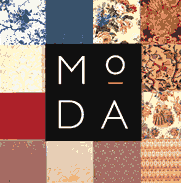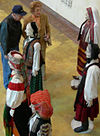
Wallpaper is used in interior decoration to cover the interior walls of domestic and public buildings. It is usually sold in rolls and is applied onto a wall using wallpaper paste. Wallpapers can come plain as "lining paper" to help cover uneven surfaces and minor wall defects, "textured", plain with a regular repeating pattern design, or with a single non-repeating large design carried over a set of sheets.
Crown Wallpaper, also known as the Crown Wallpaper Company, was an agglomeration of some of the largest wallpaper manufacturers in the United Kingdom in 1899. The agglomeration included founding member Arthur Sanderson & Sons Ltd. By 1904, the group had acquired the majority of companies specialising in relief decoration, which included Lincrusta-Walton and Anaglypta. The company had premises in Darwen, Lancashire.

The Silver Studio was one of the most influential textile design studios in the UK from its formation in 1880 until the middle of the twentieth century.

Automotive design is the process of developing the appearance of motor vehicles, including automobiles, motorcycles, trucks, buses, coaches, and vans.

Christopher Dresser was a British designer and design theorist, now widely known as one of the first and most important independent designers. He was a pivotal figure in the Aesthetic Movement and a major contributor to the allied Anglo-Japanese or Modern Style, both of which originated in England and had long-lasting international influence.
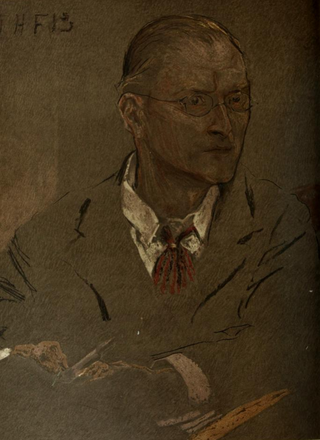
Charles Francis Annesley Voysey was an English architect and furniture and textile designer. Voysey's early work was as a designer of wallpapers, fabrics and furnishings in a Arts and Crafts style and he made important contribution to the Modern Style, and was recognized by the seminal The Studio magazine. He is renowned as the architect of several country houses.

Jasper Morrison is an English product and furniture designer. He is known for the refinement and apparent simplicity of his designs. In a rare interview with the designer, he is quoted as saying: "Objects should never shout."

Marco Zanuso was an Italian Modernist architect and designer.
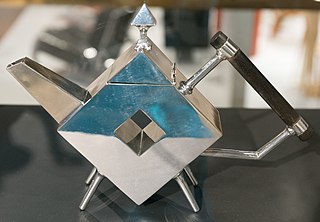
The Anglo-Japanese style developed in the United Kingdom through the Victorian era and early Edwardian era from approximately 1851 to the 1910s, when a new appreciation for Japanese design and culture influenced how designers and craftspeople made British art, especially the decorative arts and architecture of England, covering a vast array of art objects including ceramics, furniture and interior design. Important centres for design included London and Glasgow.

The Modern Style is a style of architecture, art, and design that first emerged in the United Kingdom in the mid-1880s. It was the first Art Nouveau style worldwide, and it represents the evolution of the Arts and Crafts movement which was native to Great Britain. The Modern Style provided the base and intellectual background for the Art Nouveau movement and was adapted by other countries, giving birth to local variants such as Jugendstil and the Vienna Secession. It was cultivated and disseminated through the Liberty department store and The Studio magazine.

Désirée Lucienne Lisbeth Dulcie Day OBE RDI FCSD was one of the most influential British textile designers of the 1950s and 1960s. Day drew on inspiration from other arts to develop a new style of abstract pattern-making in post-war British textiles, known as ‘Contemporary’ design. She was also active in other fields, such as wallpapers, ceramics and carpets.
Designers Guild is an international home and lifestyle company with a flagship store and showrooms on Kings Road and Marylebone High Street in London, as well as offices in London, Paris, and Munich.

Jens Harald Quistgaard was a Danish sculptor and designer, known principally for his work for the American company Dansk Designs, where he was chief designer from 1954 and for the following three decades.

Neisha Crosland is a British-born, London-based textile designer, who works in the fields of furnishing fabric, wallpaper and interiors products. Her designs have featured in the ranges of British brands such as Osborne & Little and John Lewis. Internationally, her work is also recognised and she has a collection for Hankyu department stores in Japan.

Marion Victoria Dorn also known as Marion Dorn Kauffer was a textile designer primarily in the form of wall hangings, carpeting and rugs, however she is also known to have produced wallpaper, graphics, and illustrations. Known for her significant contributions to modern British interiors in particular for her 'sculpted' carpets, she contributed to some of the best-known interiors of the time including the Savoy Hotel, Claridges, the Orion and the Queen Mary. In the late 1930s and early 1940s she created moquette fabric designs for use in London Transport passenger vehicles.

Althea McNishCM FSCD was an artist from Trinidad who became the first Black British textile designer to earn an international reputation.
Max Lamb is a British furniture designer who combines traditional, often primitive, design methods with digital design. He is known for employing unusual approaches to using natural materials, including pouring pewter onto sand, and volcanic rock.
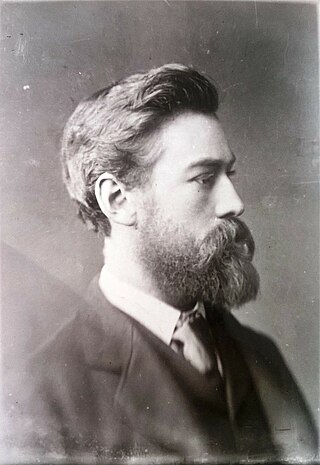
Arthur Silver (1853–1896) was a designer and founder of the Silver Studio. He was born in Reading in 1853. His grandfather had been in the cabinet-making business and his father, James Silver, was an upholsterer.
Laurence Scarfe (1914-1993) was a British artist and designer, active in the twentieth century.
Studio Swine is a British-Japanese art collective and design studio founded in 2011 by Azusa Murakami and Alexander Groves. Swine is an acronym for "Super Wide Interdisciplinary New Explorers". They are known for artistic works in design that combine narrative, film, and process-based object-making with an emphasis on sustainability.
